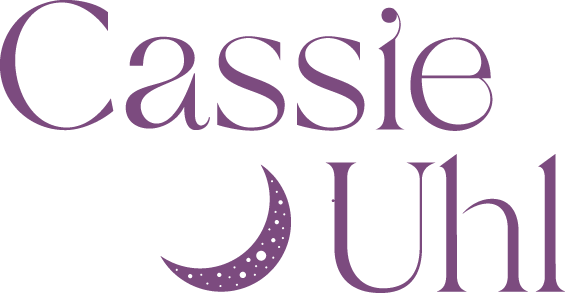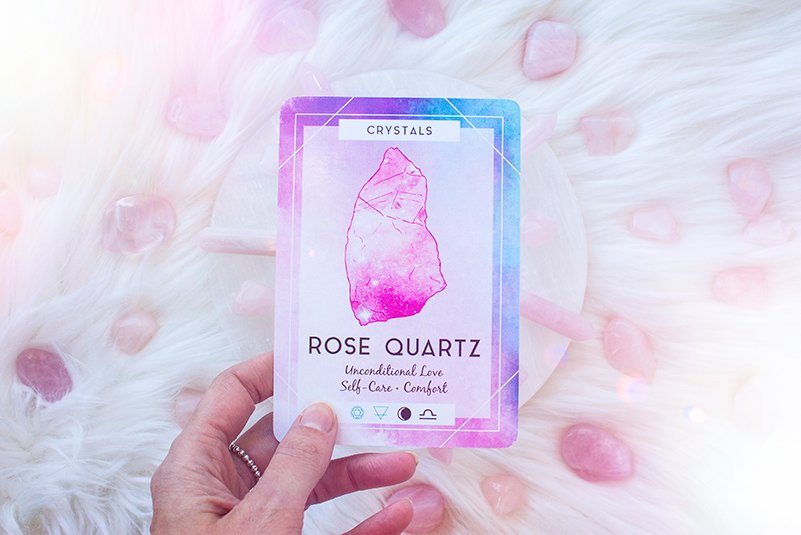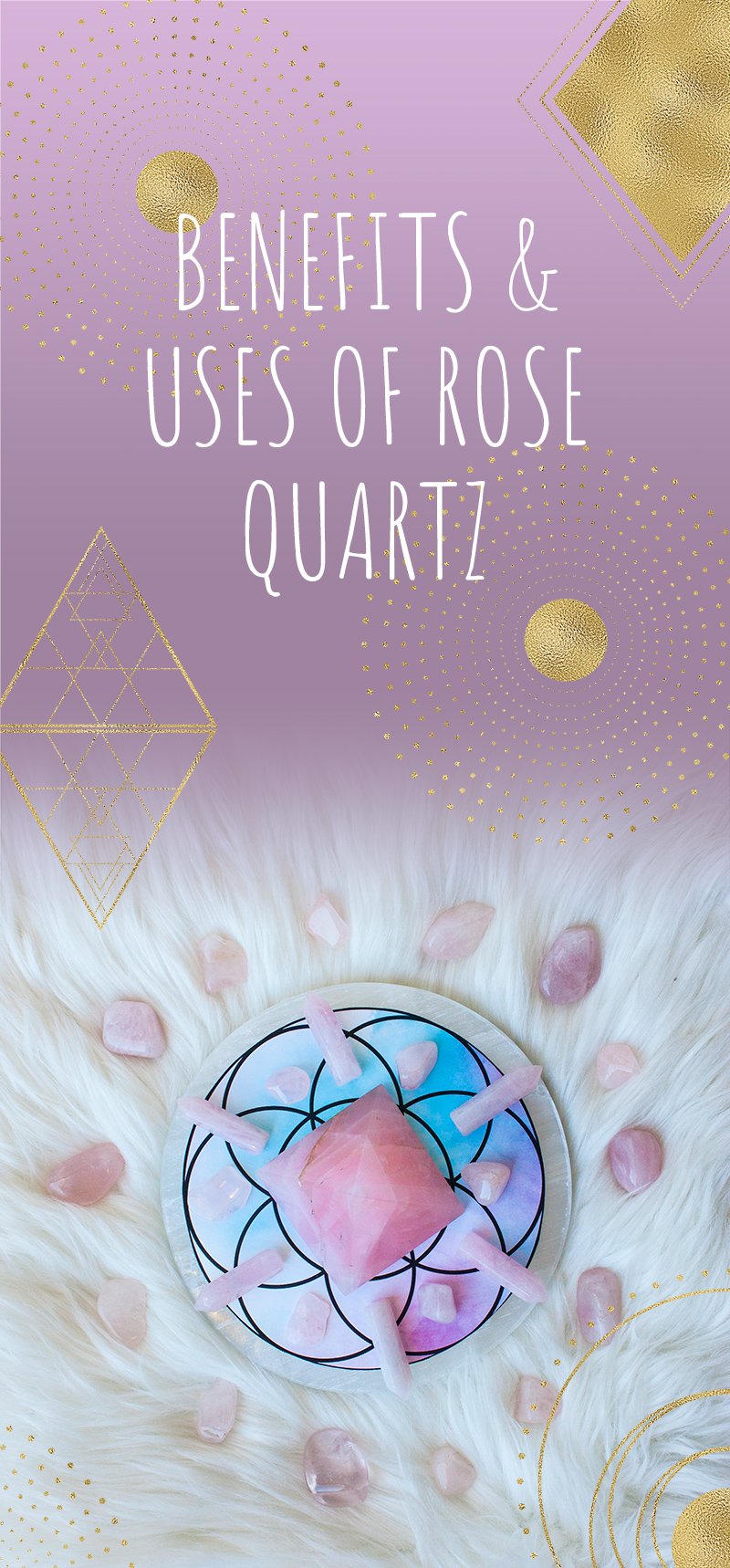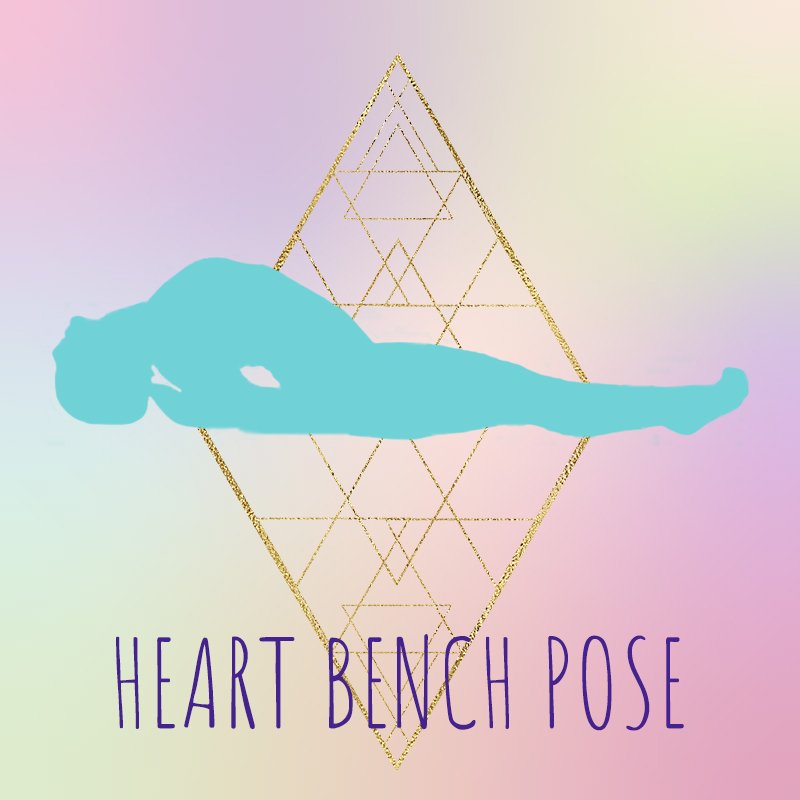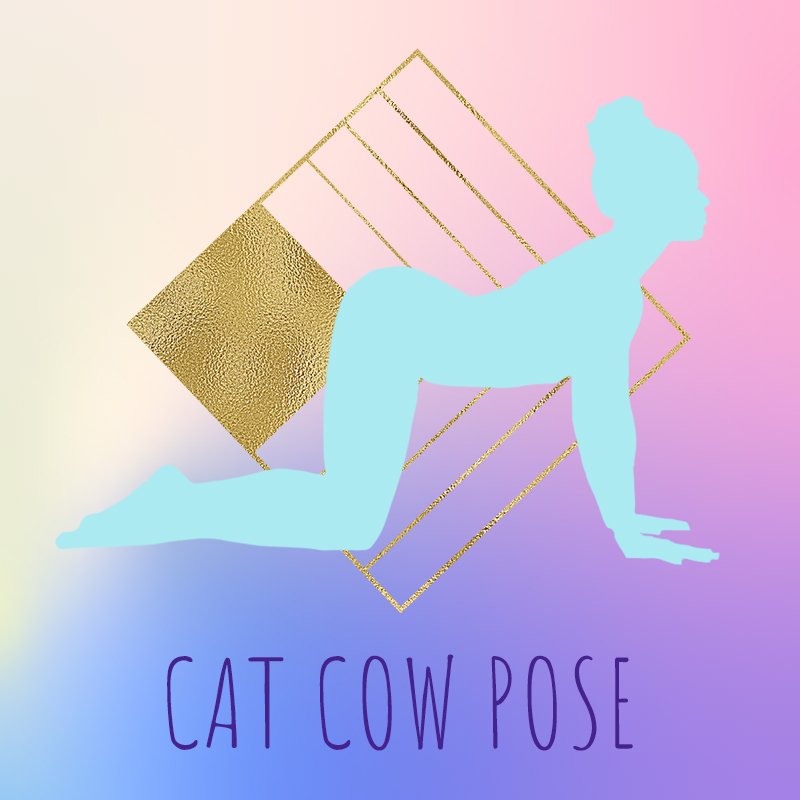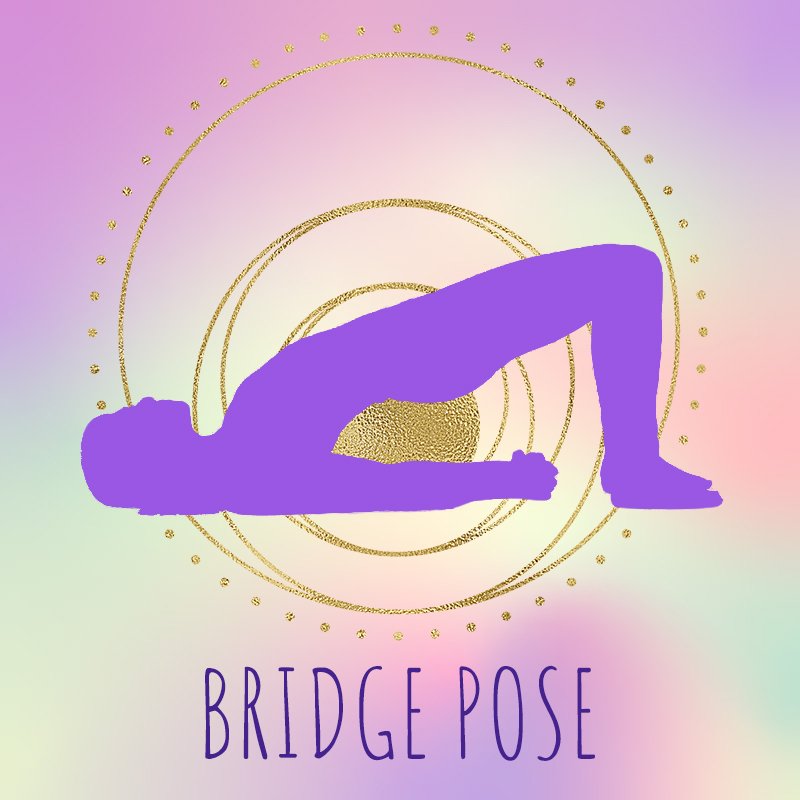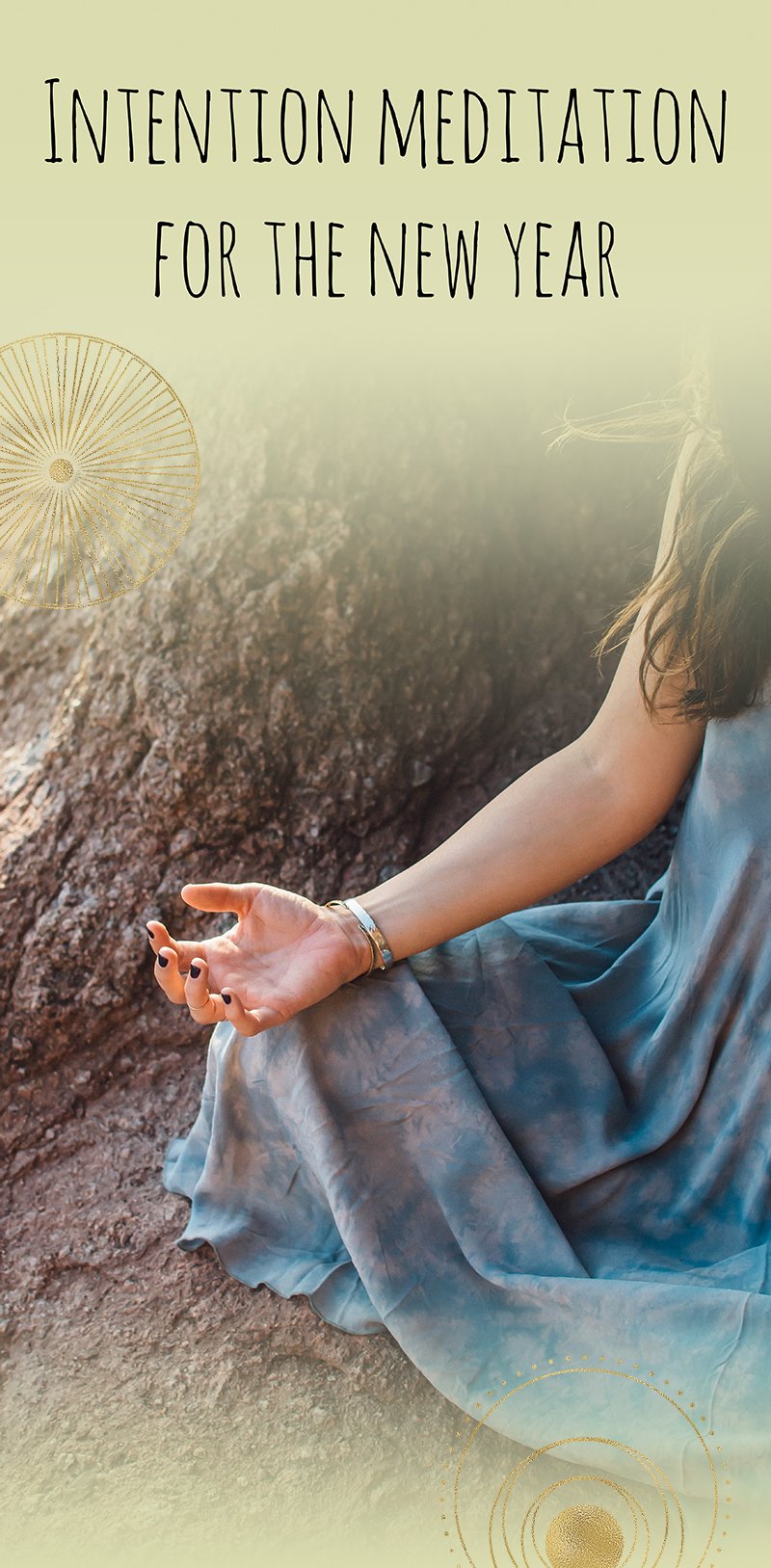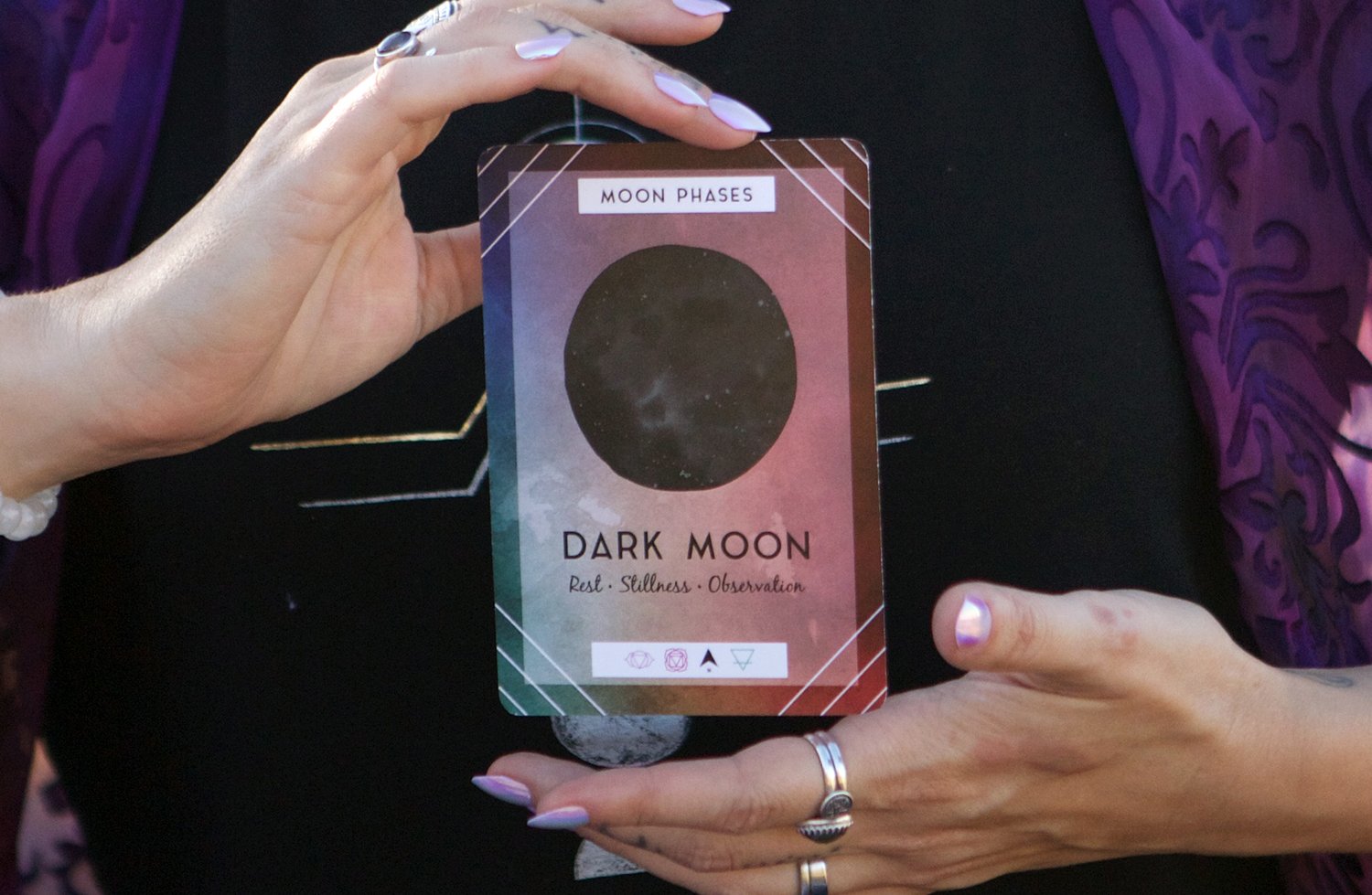Benefits & Uses of Rose Quartz
Rose quartz is a stone known as the ultimate self-love crystal…making it one of our favorites over here and of course, a great stone for February!But rose quartz isn’t just about self-love. It has a whole slew of benefits and uses, which I’ll be sharing in this post. Keep scrolling for some of the major benefits of this stone!
Rose quartz is a stone known as the ultimate self-love crystal…making it one of our favorites over here and of course, a great stone for February!
But rose quartz isn’t just about self-love. It has a whole slew of benefits and uses, which I’ll be sharing in this post. Keep scrolling for some of the major benefits of this stone!
Unconditional Love
Rose quartz is associated with the heart chakra, helping you open your center of giving and receiving unconditional love.
Energy Muse states, “According to [ancient] myth, Cupid, the Roman god of desire, or Eros, the Greek god of love, bestowed the gift of love to humans in the form of a rose quartz.”
Rose quartz can be used to cultivate unconditional love of all kinds: self-love, romantic love, friendship love, love for the earth, love for family, and more.
Compassion
Along with unconditional love, rose quartz helps cultivate compassion. By opening the flow of love throughout your body and energy field, it helps you connect to the interconnectedness of all beings, creating more love and compassion for the people around you and even those you can’t see and will never meet. I’d love to get rose quartz into the hands of every person in the world and watch how the world changes!
Restores Trust
In the heart chakra, we store fear, anxiety, and broken trust. Rose quartz can be used to help us accept past hurts, forgive ourselves and others, and ultimately restore trust.
Softening & opening
Sometimes our hearts get hardened. This often happens when, as I mentioned above, our trust has been broken, our hearts have been broken, or we’re holding and carrying past pains and hurts with us.
Rose quartz is your ally to help you gently soften and open this center of love. It’s here to help you soothe and break down the walls, opening yourself back up to connection, love, and vulnerability.
Gratitude
Gratitude comes from the heart chakra. When our heart chakras are closed, it can be difficult to experience gratitude and really feel the depth of all that we are grateful for. Rose quartz can help you release blockages here and open up to a flow of gratitude, helping you love your life for all that it is.
Cleansing
This stone is associated with the element of water and is thought to be very fluid, helping wash out stuck emotions, toxic energies, and negativity to return you back to your pure, divine essence: love.
It works slowly and gently — think more of a softly flowing river than a crashing ocean wave!
Venus energy
Rose quartz carries with it the energy of Venus. Venus is the ruling planet of the signs Libra and Taurus, and connects to the Empress card in the tarot.
We can think of Venusian energy as the energy of lushness, self-care, receiving, beauty, and flow. If you’re wanting to up your self-care game, open yourself up to receiving, and release stress — work with rose quartz!
Uses of Rose Quartz
Now that you know some of the benefits and meanings of rose quartz, how can you actually incorporate it into your life? Here are some suggestions but as always, use your intuition! You can also meditate with rose quartz and ask it how it wants to work with you.
Add rose quartz to your altar to call in Venus energy.
Use in self-love rituals and spells. Find a rose quartz ritual in The Ritual Deck.
Create a gratitude or love crystal grid featuring rose quartz. Find grid and crystals for a love crystal grid in The Goddess Discovery Book.
Meditate with rose quartz on your heart to help you open your heart chakra and let forgiveness flow through you.
Wear rose quartz as jewelry to carry its vibration with you wherever you go.
Create a self-love spell bag with rose quartz in it.
Incorporate a rose quartz facial roller into your daily routine.
Place rose quartz in the corners of your home to open the flow of love throughout your space.
Heart-opening Yoga practice & breathwork to cultivate self-love
Every February, we’re reminded of the love that already exists within us. While there are so many different kinds of love in our lives, it all starts with us: from a place of deep self-love. In this blog, I’ll be sharing a heart-opening yoga practice and a Kundalini breathwork meditation to help you cultivate self-love.
Every February, we’re reminded of the love that already exists within us. While there are so many different kinds of love in our lives, it all starts with us: from a place of deep self-love.
In this blog, I’ll be sharing a heart-opening yoga practice and a Kundalini breathwork meditation to help you cultivate self-love.
Kundalini Breathwork meditation
This Kundalini yoga breathwork meditation is said to help give strength to your heart and open up your heart center.
Find a comfortable seat and extend your arms straight out in front of you. You want them to be parallel to the mat with your palms facing down. Close your eyes and focus your inner gaze at the center of your chin. Start to take long, slow, deep breaths, holding your arms steady in front of you.
Hold this breathwork meditation for three minutes. Then, move into our asana practice below.
Yoga practice
This yoga practice is focused on heart-opening yoga poses because heart openers, like the name suggests, help balance and open your heart chakra. Your heart chakra is the center of giving and receiving love in your body. Opening this center helps open you up to a flow of unconditional love within and outside of yourself.
Heart bench
As someone with chronically tight shoulders, heart bench is my favorite restorative pose to start off a yoga practice. For this pose, you’ll need two yoga blocks. If you don’t have blocks, try getting creative with stacks of books or a rolled yoga mat under the shoulders.
You’ll take your first block at either its low or medium height and place it lengthwise along the spine between the shoulder blades, opening the heart. The second block will go under your head at whatever height supports a long neck and open throat.
Breathe into your heart space here, visualizing each inhale sending breath into the chest and each exhale softening, opening, and expanding your heart chakra. Stay here for 3-5 minutes, breathing deeply.
Half-pigeon variation
To transition out of your heart bench, lower all the way onto your back, bend your knees, and press your whole back into your mat. Feel your whole back grounding into the Earth, resetting the spine.
When you feel ready, cross your right ankle over the bottom of the left thigh (right under the knee). Then prop yourself up on your forearms and roll the shoulders back to open the heart as you energetically push your right knee away from you, stretching the hips. Spend a minute or two here, breathing deeply into the heart center, and then repeat on the other side.
Low lunge
Slowly find your way to downward-facing dog and pedal out the feet. When you feel ready, inhale to step your left leg forward. Lower the knee onto a mat or blanket, and create enough space in the hips so that you can really feel a stretch into your right hip flexor. Inhale to lift the arms overhead, bending back into a crescent lunge.
After a few breaths with this arm variation, stack your palms over your heart and breathe into your hands, keeping your back bending.
Stay here for ten more breaths, then repeat on the other side.
Mountain pose flow
From your lunge, step the back leg forward into a forward fold at the top of your mat. Hold opposite elbows to help pull your chest to your thighs and find a few breaths here.
When you feel complete, release your arms and inhale to a flat back, palms to shins or thighs. Exhale to fold forward. Inhale to roll all the way up to stand, reaching up and back. Exhale to fold all the way forward as you chant “YAM” (pronounced YUM), the bija mantra for the heart chakra.
Continue to flow with your breath for at least 10 complete cycles. Let yourself find a rhythm and find softness through the face, the knees, the heart, as you move.
Dancer’s pose
After your last exhale, hold in your favorite version of forward fold for a few more breaths. When you feel complete, inhale to roll up through your spine and find mountain pose with your arms at your sides.
Create a stable foundation by grounding down through your left foot, pressing into all four corners of the foot and through each of the toes. Bend your right knee and take the ankle into the right hand behind you. Inhale to lift your left arm over your head.
Feel free to stay here. If you’d like to go deeper, use your next exhale to slowly kick your right foot back and hinge forward at the hips, opening your heart and your right hip flexor. Stay here for at least 10 breaths. If you find yourself feeling unsteady or falling out of the pose, practice talking to yourself in a loving way and come back into the pose without judgment!
After ten breaths or whenever you feel ready, use an exhale to release everything back down and take the post to your other side.
Cobra pose or upward facing dog
From mountain pose at the top of your mat, fold forward, and step back to downward-facing dog. Inhale to shift forward to plank and exhale to either lower halfway or lower all the way onto the belly. Inhale to lift into cobra or upward facing dog. Stay here for a few breaths, rolling the shoulders back, pressing into the tops of the feet, and firming through the legs. After a few breaths, exhale to shift back to downward-facing dog.
Repeat this sequence one to three times, then stay in downward-facing dog for a few breaths.
Child’s pose
Inhale to lower your knees, and exhale to shift your hips back into your favorite variation of child’s pose. Let this child’s pose be a place of deep presence with yourself — with your breath, with any feelings or thoughts that are coming up to the surface. Practice speaking to yourself lovingly and tending to yourself with care. Stay here for about twenty breaths.
Cat/cow flow
From child’s pose, inhale to lift yourself into tabletop. Start to move through a cat/cow flow with your breath, using your inhale to lift your tailbone and open your heart, and your exhale to round through your spine and tuck your chin. Feel free to add in any other movements that feel good to you, like opening up through the sides of your body or incorporating hip circles.
Heart to Earth pose
When you feel complete in cat/cow, find your way back to a neutral spine. Start to walk your palms out in front of you, keeping your hips stacked over your knees, slowly lowering your chest and forehead all the way to your mat.
This intense pose invites us into a place of deep surrender. Keep your awareness on your breath, sending it into your heart space, and let yourself be with whatever comes up here. Stay here for at least 10 breaths, but feel free to stay longer if that feels right for you.
Bridge pose
Slowly shift back into tabletop and all the way onto your back, bending your knees and planting your feet on your mat. Inhale to slowly lift your hips and lift your arms all the way overhead, backs of palms touching down behind you. Breathe here in this bridge pose variation for 10 breaths, using an exhale to slowly lower your hips and arms back down.
Find a counterpose after you come down by walking your feet wider than hip’s distance and releasing your knees to rest in on each other. Place your palms on your belly and rest here for 5-10 breaths.
Reclining cobbler pose
Find your savasana in reclining cobbler’s pose, bringing the soles of your feet together. Rest one palm on your heart and one palm on your belly, letting yourself rest, relax, and integrate the benefits of your practice. Stay here as long as you like, but make sure you let yourself spend at least three minutes here.
Explore more blogs to help you cultivate self-love here:
How to Get Started with Spiritual Activism
If you’re reading this, you probably have a desire to make the world a better place. But you may feel like you’re not sure how to go about it in a way that aligns with your spiritual practice and values.Your spiritual practice and your activism aren’t separate, they’re one. They can be, and I think they should be— because the world needs you, as an activist, to show up as a spiritual being...and as a spiritual being, to show up as an activist.
If you’re reading this, you probably have a desire to make the world a better place. But you may feel like you’re not sure how to go about it in a way that aligns with your spiritual practice and values.
Your spiritual practice and your activism aren’t separate, they’re one. They can be, and I think they should be— because the world needs you, as an activist, to show up as a spiritual being...and as a spiritual being, to show up as an activist.
This means that not only are we meditating on healing the world, manifesting collective healing, and whatever other healing practices you have…but we’re also bringing that work into how we show up in the world as agents for change. We show up as our whole, spiritual selves when we call our senators and representatives. When we march, when we protest, when we volunteer, when we donate, when we organize, when we listen, when we post on social media.
That is spiritual activism.
COMPASSION
One really important piece of spiritual activism is compassion for yourself and for others. It’s really easy and often justified, to get caught up in your feelings and forget that the person you’re engaging with is also a human being. A human being who may be really offending you right now, but still a human being.
Remember that your feelings are justified. And of course, you don’t have to continue to engage with someone who is hurting you. But remembering some of the truths that are likely part of your spiritual practice, like compassion for all and the idea that at the core of it, we are all one, is just as important in these situations as it is in others.
ANGER
Ask yourself:
How do I want to feel?
How do I want others to feel around me?
List these answers out, and think about how they apply to your activism. If you want to feel inspired, open, safe, joyful, free, loved, whatever it is — you probably want other people to feel that way around you, too.
How can you approach your activism in a way that holds space for that? How can you approach your activism in a way that makes yourself and the people around you feel that way the majority of the time?
A note about anger: you probably want to create change around two things: things that break your heart, and things that make you angry. In some dialogue about spirituality, anger is bad. It’s something to be stifled and ignored.
But anger is human, and I think the only thing that makes it bad is repressing it. You’re going to be angry about injustice. It’s what we do with our anger, how we express it, and how we channel it that can help or hurt us.
So instead of repressing your anger or using it to lash out at people, I invite you to channel your anger into productive change, remembering that compassion and anger aren’t mutually exclusive.
START WITH YOU
When it comes to activism, start with you. It can be hard to wrap your head around at first but understand that you are not separate from the problem. You are not separate from these oppressive systems.
As a white person, racism isn’t about someone else. It’s about me.
As a cisgendered person, violence against transgender people isn’t about someone else, it’s about me.
The list goes on.
Ask yourself: in what systems am I an oppressor?
You can be oppressed in certain systems, like gender, and be the oppressor in others, like race.
This is where we get into the idea of privilege.None of this is about berating yourself for being a bad person or being complicit in these systems. You’re not a bad person! But the point of this being the first step is that when we know better, we do better. But we can’t do better if we don’t immerse ourselves in the “know better” step first.
Ask yourself: what privileges do I hold?
(Ideas: able-bodied privilege, white privilege, cisgendered privilege, straight privilege, thin privilege, in your country legally, etc.)
Take some time to really think about how those privileges manifest in your life and how they’ve become systems of belief. For example, what beliefs have you absorbed about people who don’t hold the privilege of being documented, or who don’t hold thin privilege?
What can you do to root down, shift those beliefs (which always manifest into actions even if you may not realize it!), and create more equality in your own life?
How is this spiritual activism? I think it comes back to the idea that healing yourself is healing for the world. I think most of us can probably get behind that. In this sense, cleaning up your own baggage, the ways in which your hurt and oppress is the most important thing we can do.
RELEASE
These days in this political climate I think it’s really important to have an embodiment practice to help you release trauma, anger, and other emotions you’re storing up from your cells. Tapping, breathwork, and a good old-fashioned scream are great ways to release.The practice can look like anything you need it to, but choose something that’s a physical release.
Getting Started with Intuitive Eating // 6 Tips
Most of us are inundated with conflicting messages about food for our entire lives.We’re told to count calories, to eat certain portions of this or that, that this food is amazing for you and this food should be avoided at all costs.We’re taught to trust everything but ourselves when it comes to food (and actually, this is true in general, too!).Intuitive eating is a kind and compassionate return to trusting yourself with food. It’s an anti-diet way of eating that focuses on connecting with your intuition.What does your body need? What would truly nourish your mind, body, and soul in this moment?The truth is, your body knows what you need. You just need to listen to it!
Most of us are inundated with conflicting messages about food for our entire lives.
We’re told to count calories, to eat certain portions of this or that, that this food is amazing for you and this food should be avoided at all costs.
We’re taught to trust everything but ourselves when it comes to food (and actually, this is true in general, too!).Intuitive eating is a kind and compassionate return to trusting yourself with food. It’s an anti-diet way of eating that focuses on connecting with your intuition.What does your body need? What would truly nourish your mind, body, and soul in this moment?
The truth is, your body knows what you need. You just need to listen to it!There are 10 simple principles of intuitive eating from one of the leading books on the subject, Intuitive Eating.
1. Reject the diet mentality. We’re inundated with information about diets from the time we're kids. Weight Watchers. South Beach. Atkins. Paleo. Keto. Grain-free. They’re all based around the idea of restricting food. How would it feel to reject the idea that you have to eat other than how your body naturally wants to?
2. Honor your hunger. When you feel hungry, eat. When you feel satisfied, stop. It’s as simple (and as difficult) as that.
3. Make peace with food. Remember that food is not your enemy, to be fought with. It’s fuel, it’s nourishment that is here to support you and help you live the life you want to live.
4. Challenge the food police. These are the rules like “You have to eat three meals a day,” “carbs are bad for you,” and you’re “good” for eating a salad for lunch. You don’t need the food police. You can trust your body.
5. Respect your fullness. This is about eating more consciously. Listen to your body’s signals that you feel full and satisfied. Try pausing halfway through eating to check in with how you feel.
6. Discover the satisfaction factor. You may be physically full but still not satisfied. That’s okay. Discovering the satisfaction factor is realizing that when you eat what you want, you’ll likely feel more pleasure, more satisfaction, and overall more content.
7. Honor your feelings without using food. Sometimes we use external things like food to numb out when we don’t want to feel what we need to feel. Try finding other ways to cope and comfort yourself that don’t involve eating.
8. Respect your body. We’re taught from a very young age to have a lot of judgment around our bodies. Many of us have a constant critical dialogue running in our heads, especially around food. Learn to love and accept your body as it is right now.
9. Exercise - feel the difference. Moving your body isn’t about exercising to punish yourself, or burn enough calories so you can eat the thing you want, or to look a certain way. Reframe moving your body as a way to feel your best and nourish yourself.
10. Honor your health. Be gentle. Connect with how certain foods make you feel and remember that it’s about the consistency of what you eat over time— one meal or one day of eating won’t cause you to be unhealthy or gain weight.
Ready to get started? Below are six tips for intuitive eating.
1. Take an inventory of your social media presence.
Are you following any accounts that are helping create a toxic relationship with food? Do you follow fitness accounts that make you feel bad about yourself whenever you see their photos pop up in your feed?After you purge your social media feed, can you bring in some more body-positive Instagrammers whose feeds and relationship with food inspire you to have a more loving relationship with your body and your plate?
2. Discover your physical signs of hunger and fullness.
What does it feel like to be hungry? What does it feel like to be full? To start connecting to these feelings, try placing one hand on your belly before you get to the table and taking a few deep breaths into your stomach. Your belly is where you feel hunger and fullness first, so taking a moment before and after eating to connect to those feelings can help you eat more intuitively.
3. Give food your full presence.
Oftentimes, we’re eating on the go or while we’re reading, scrolling on Instagram, or working. See if you can give food your full presence. Eat each meal slowly and mindfully without distractions, really savoring each bite, chewing it thoroughly, and paying attention to when you feel satiated. Think of it as an eating meditation!
4. Notice your food self-talk.
Is there a voice in your head that declares you “good” for eating vegetables and “bad” for eating dessert? (Spoiler alert: the answer is most likely yes.) Start to notice those thoughts (it can be helpful to write them down) and reframe them.For example, a thought like “Eating dessert makes me lazy and weak” can become “Eating dessert has nothing to do with who I am as a person. Eating sweets fills my soul and I am free to eat them as I like.”
5. Notice how foods make you feel.
Start to make the connection between certain foods and feelings. For example, certain foods may make you feel:
Energized
Sluggish
Cranky
Creative
Uninspired
Light
Tired
Or a variety of other feelings.
6. Don’t forget pleasure and satisfaction.
We aren’t machines. Food is deeply connected to memory, to pleasure, to joy. We don’t always need to eat the “healthy” thing. The key is to remember that those foods you often restrict and then binge on are limitless. You don’t need to binge on them because you can always eat more tomorrow. There are no restrictions. When your body wants dessert, see if you can offer it dessert without judgment or attachment to what you think “eating dessert” may mean.Here are some journaling questions that can help you get started with a more intuitive way of eating:
Think about your current relationship with food. Describe it and then describe how it makes you feel.
What would you like your relationship with food to look like and how would you like to feel about food?
What foods make you feel amazing?
What would eating mindfully look like for you?
What is one thing you can do today to start eating more intuitively?
Intention Meditation for the New Year
Each morning we rise with the promise of being able to start over, and no morning is better suited for a reset than New Year’s Day. The New Year is a time of rebirth and so, finds many of us setting our intentions for the next year. The trick is setting intentions that feel authentic to who you are and promise to bring real change to how you approach every aspect of your life.
Each morning we rise with the promise of being able to start over, and no morning is better suited for a reset than New Year’s Day. The New Year is a time of rebirth and so, finds many of us setting our intentions for the next year. The trick is setting intentions that feel authentic to who you are and promise to bring real change to how you approach every aspect of your life.
Intentions Are Naturally Expansive
Intentions truly have no limit. If you decide that you would like to feel balanced and happy every day, there’s no end to that. You also can enjoy the flexibility of not having to hit a degree of happiness each day. If today you’re just a little happy, while yesterday you felt like you were flying, you’ve still achieved your intention.
Goals are wonderful to have, and it’s tradition at this point to set New Year’s Resolutions. But here’s the thing: goals can make you feel like you’ve failed at something. If you don’t meet a goal, it’s easy to feel bad about missing it.
So, if you’re a more goal-oriented person, start with setting an intention, then set your goal, and be sure to add some self-compassion to keep things positive.
Have No Regrets
It’s natural to look at things that you didn’t do, relationships that came to an end, or other events that you perceive as being negative. But I challenge you to shift your thinking about last year so that you can set yourself up for success this year.
Ask yourself the following questions:
How was last year's healing?
What freedoms do I feel now that I’ve let some of the junk go?
When did my choices honor my true self?
What bad habits did I overcome?
How far have I come with ____?
A Meditation Script for Setting Intentions
The following script will guide you through a healing meditation that focuses on setting intentions. Use it as a rough guide in your practice or record yourself reading it on your phone so you can play it back whenever you’d like.
Before you begin, have an intention in mind, either a new one or one that you’d like to renew.
Taking a deep breath in, I invite you to close your eyes and notice your body in this space.
Notice how the breath moves in through your nose and out again. Let’s take ten nourishing breaths here.
As you continue to breathe, notice that you can direct your attention anywhere you’d like it to go.
I invite you to draw your attention to the center of your head, imagining going deep into the center of your consciousness, about eye level. Any time your mind wanders, bring your awareness back to this spot.
Still breathing, I invite you to recall the last year. Is there anything that you wish to release?
If so, imagine that energy, memory, or even regret coming together in a ball of light floating in front of you. Allow this process to occur at a pace that’s comfortable.
What color is that energy? Do you feel the old year releasing out of different parts of your body?
What does it look like?
Still breathing, I invite you to release that ball of energy. Perhaps it floats off into the sun to be burned up in its rays. Maybe you imagine an angel coming down and carrying it safely away. Or maybe it just disappears.
As you watch this energy leave, how do you feel? Take a few moments to enjoy the expansiveness of this release.
Now, let’s fill in those spots that housed that old energy.
Consider an intention you would like to set – either a new one or one you’d like to renew.
Maybe you imagine writing the intention down in your journal. Perhaps you imagine what it would be like to hear it spoken aloud by a favorite person.
If this intention also looked like a ball of energy or light, what color would it be?
Would it be warm or cool?
I invite you to imagine a beautiful funnel over your head. This golden funnel simply floats above your head and invites only the best, most beautiful energy into your body.
At this time, imagine that funnel draws the energy of your intention into your body, filling up all the empty spaces where the old energy from last year resided.
If you feel a physical sensation, like a tingling or a twitching, that’s okay. Your body is simply responding to the shift in energy.
When it feels as if this energy has filled your body, take a moment to close off your funnel, knowing you can reopen it at any time to invite only the best energy into yourself.
Let’s take another ten nourishing breaths here and sit in this space with renewed, intentional energy.
When you are ready, you may end your meditation at your own pace.
If you enjoyed this meditation and want to learn more about meditation check out more blog posts on meditation here.
How to journal with the moon phases + 10 journal prompts
Your mood, physical body, and spirit body all go through phases, and journaling with the moon is an ideal way to track all of these. You may find that you’re more synced with the moon than you thought!
Your mood, physical body, and spirit body all go through phases, and journaling with the moon is an ideal way to track all of these. You may find that you’re more synced with the moon than you thought!
Why You Should Try Moon Journaling
Wouldn’t it be nice to know which moon phases make you feel the most intuitive, expressive, or reserved? The way you relate to each moon phase is reflective of you alone and experiences will vary from person to person. You may find that your diet, intuition, and menstruation are affected by the phases of the moon. Keeping a moon journal will enable you to track any patterns to better understand all of your cycles.
How Often Should You Write in Your Moon Journal?
Take notes in your moon journal as often as you like! Journaling once a week will ensure that you hit each of the main phases of the moon: new moon, waxing moon, full moon, and waning moon. Moon journaling twice a month, on the full and new moon, can also be enlightening.
Starting out, I suggest making a quick note in your moon journal for 30-60 consecutive days. Making a quick note daily, in the beginning, will help you catch any obvious patterns right away.
What You’ll Need to Start Your Moon Journal
You’ll need a moon phase calendar, digital, or a hard copy.
You’ll also need a writing utensil and a journal or notepad. That’s it!
10 Topics for Moon Journaling
Here’s a list of suggested moon journaling topics. Read through the whole list. What topics call out to you the most? You can journal on all or some of these topics, it’s completely up to you.
Start your moon journaling by recording the date, the moon phase, and the zodiac sign for the phase (optional).
Record how you feel emotionally. Check-in, do you feel content, happy, sad, jealous, excited, energized, grateful, anxious, or angry? Record your mood for the day or overall week. This can be as simple as writing one word.
Record how you feel spiritually. How connected and intuitive do you feel? If you meditate regularly, was it easy for you to “drop-in” or did you find your meditation to be a struggle (this is always a good indicator of my spiritual well-being).
Record how you feel physically. How are you sleeping, your energy levels, and your diet? Are there any particular foods you're craving? If you exercise regularly, was your activity easy or more forced?
Record when you start and end your menstrual cycle. You may also decide to notate what each menstrual cycle feels like to help unearth patterns. If you’re particularly in-tune with your cycle or trying to conceive (or not conceive!) you might also find it helpful to track your ovulation with the moon.
Note any goals, intentions, and manifestations you’ve initiated and when they manifest. New intentions are best to set on a new or waxing moon.
Note any habits, people, outcomes, or things you’re trying to let go of and when you feel you’ve shed them. Releasing and letting go is best to initiate during a full or waning moon.
Notate the zodiac sign the moon is in. If you want to take your moon journaling to the next level you can notate what zodiac sign the moon is in. The moon is always positioned in a zodiac sign and cycles through them every 2-3 days. The sign the moon is in will also have an effect on you too. Try looking for even broader patterns by notating what sign the moon is in when you journal. I like this online resource for tracking the zodiac sign for each moon phase.
Track your triumphs! Did something happen that was totally out of the blue and made your day? Maybe you received an unexpected promotion, landed your dream job, or ran into an old friend, write it down!
Track your worst days. Did you have one of those days where nothing seems to go as expected and you just can’t shake it? These days aren’t as fun, but being able to estimate when they may come up can sure be helpful.
Note your dreams. Dream journaling is an insightful activity on its own. Notating the moon phase for your dreams can shed even more light on what your subconscious is trying to tell you. You might be able to identify times when your dreams are most active so you can plan to have a notepad ready on your nightstand.
Moon journaling can be as simple or in-depth as you’d like and can be tailored to suit your needs and schedule.
